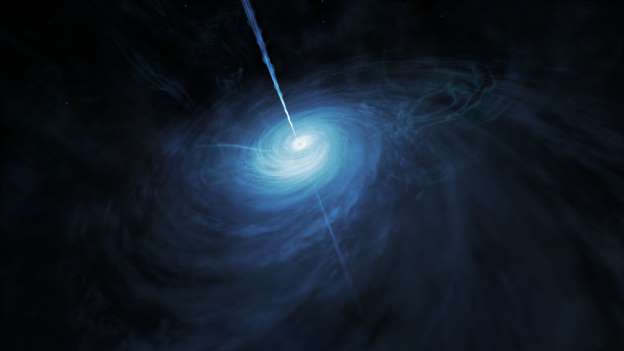Astronomers used data from the Nasa/European Space Agency Hubble Space Telescope to find the ancient quasar, which they believe can provide an insight into the birth of galaxies when the Universe was about a billion years old.
Astronomers said it is by far the brightest quasar yet discovered in the early universe.
A quasar is the extremely bright nucleus of an active galaxy and its powerful glow is created by the incredible amounts of energy released by gas falling toward the supermassive black hole at its centre.
The newly discovered ancient quasar, catalogued as J043947.08+163415.7, is so old that the light being received from it started its journey when the universe was only about a billion years old.
Nasa’s Wilkinson Microwave Anisotropy Probe in 2012 estimated that the universe is more than 13-billion years old.
Astronomers said the quasar has a brightness equivalent to about 600 trillion suns and the supermassive black hole powering it is several hundred million times as massive as our sun.
The data shows not only that the supermassive black hole is accreting matter to itself at an extremely high rate, but also that the quasar may be producing up to 10,000 stars per year, scientists said.
This compares to the Milky Way which produces about one new star every year.
Lead author Xiaohui Fan, of the University of Arizona, said he did not expect to find many quasars brighter than this in the whole universe.
He added: “That’s something we have been looking for a long time.
“We don’t expect to find many quasars brighter than that in the whole observable universe.”
Co-author Fabian Walter, of the Max Planck Institute for Astronomy in Germany, said it was a prime candidate for further investigation.
He added: “Its properties and its distance make it a prime candidate to investigate the evolution of distant quasars and the role supermassive black holes in their centres had on star formation.”








